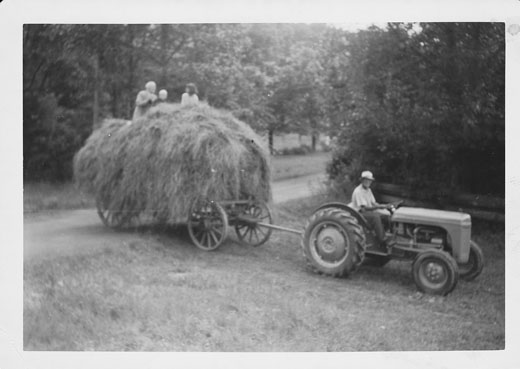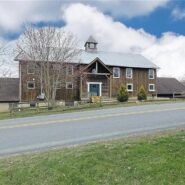The Weekenders: Property Research
Kim McGalliard | August 24, 2012
Like most people, we didn’t know very much about our house or it’s history before we bought it. After we put in our bid and started dealing with lawyers, we found out that it was the last piece of a larger estate sale. We found out the name of the family that used to own it, but since the previous owner had passed away and the executor of the estate wasn’t local, there wasn’t really anyone to answer any of the hundreds of questions we had. Our agent knew as much, or little, as we did about it, and the seller’s agent was very hands-off (to say the least).
I love doing research, so I took it upon myself to try and find as much information about the house as I could just using what I could find on the Internet. While I didn’t find tons of information about the house itself, I did find some really helpful tools for doing property and town research.
Obviously, the first thing I did was go to sites like Zillow and Trulia. From there I was able to figure out that the house had been for sale since 2005 or 2006, that the taxes were all over the place (and seemed quite high) and that at one point it had been for sale for A LOT more than what it was for sale for now. In general, I found that real estate sites like Zillow and Trulia could be good for newer homes or homes that had sold several times and were in less rural areas. They aren’t so helpful for homes that had (as far as I could find out) never been sold.
My next step was to Google the name of the previous owner, including the name of the town. I found his obituary – he died in 2004, was a lawyer, served in the Navy in the Vietnam war and is buried in the cemetery down the road.
There was also a link to the local town web site and the minutes to a planning board meeting from 2007. While not exactly a gold mine of information, the reference to our place in the planning board minutes discussed the subdivision of 78 acres of the original 80, and the zoning variance for the 2.25 acres that the house is on (in our town zoning requires at least three acres for a house and a variance from the planning board is needed if a subdivision results in less than three acres). This explained the big drop in price, and also gave me more info about who bought the adjacent land.
It also reminded me of some advice that my lawyer told me when I bought my co-op in Brooklyn: read the minutes of the co-op board (which I tried to do for my co-op, but there were only four sets available, which in hindsight should have been a big red flag…) so I clicked through all of the recent town board and planning board meeting minutes. Small town meeting minutes can be really informative and entertaining and as you spend more time in the town, you’ll start to recognize both the names of people and places and the links between them. I still read them regularly now, just so I feel like I can know a little bit more about what’s going on in the town. Not all towns post the meeting minutes online, so you might have to go to the town office to request them.
The other mystery that we were trying to solve was about the taxes on the house and why they varied so wildly. One reason was the subdivision, but that didn’t seem to tell the whole story. I don’t remember exactly where I found the link, but I found the GIS (Geographic Information Services) Real Property Information site for Greene County which opened a treasure trove of information about the house and our area.
Every county provides public access to local GIS. Information includes (as the name says) geographic features like roads, streams, rock and soil types, flood plains, land use information (farming, logging, industrial, etc.) school districts and zoning but it also includes basic to detailed information about each property including, history of alterations and permits, property class, condition of the property, ownership and, most importantly, assessed value – the magic number that determines how much you pay in taxes.
Unfortunately these sites aren’t easy to use (they have a significant learning curve), and it seems to vary from town to town and county to county how frequently and thoroughly they are updated. But once you figure them out, there is a ton of information that you can find about the land you are considering, as well as land surrounding where you are thinking of buying.
You’ll need one of three pieces of information to find a property on one of these maps:
- The official name of the owner. Keep in mind that property is sometimes listed as part of an estate, LLC or other business enterprise, so you’ll need to find the name of the legal owner.
- The home street address – but you’ll need to figure out the exact format. For example some systems won’t return results if you spell out “Road” vs using the abbreviation “Rd.”
- Tax ID / SBL – this is a nine or ten digit unique number that identifies your property. Most likely you won’t know this, but you can find out what it is once you find the property.
Here are links to the GIS sites of some of the Upstate counties that are often featured on Upstater. A lot of towns and counties did tax assessments in 2012, so many of them have recently been updated:
Since we’ve moved into our house and became friends with the neighbor who was the previous owner’s caretaker, we’ve learned a lot more about the house He’s even given us some forgotten family heirlooms including the photo above – the last owner’s grandfather hauling hay that was cut from the meadow that is no longer part of the property. The previous owner was the third generation to own the house.
Read On, Reader...
-

Jane Anderson | April 1, 2024 | Comment A Westtown Barn Home with Stained-Glass Accents: $799.9K
-

Jane Anderson | March 25, 2024 | Comment A c.1920 Three-Bedroom in Newburgh: $305K
-

-

Jane Anderson | January 30, 2024 | Comment A Renovated Three-Story Beauty in Poughkeepsie: $695K
